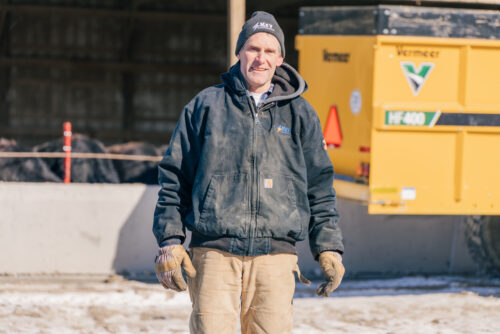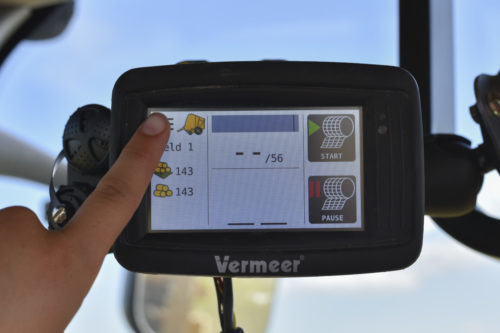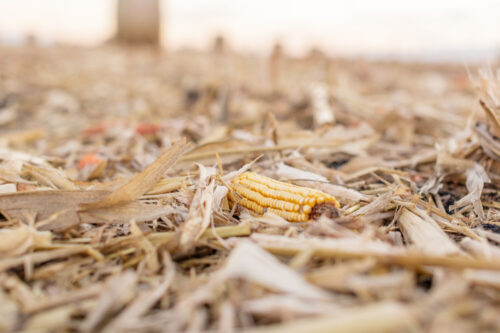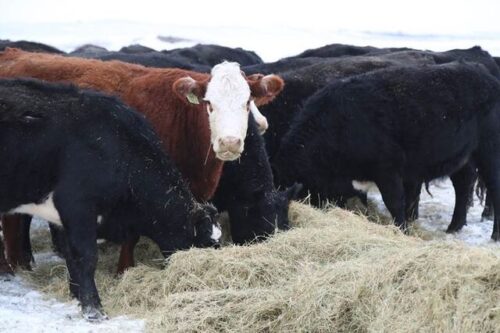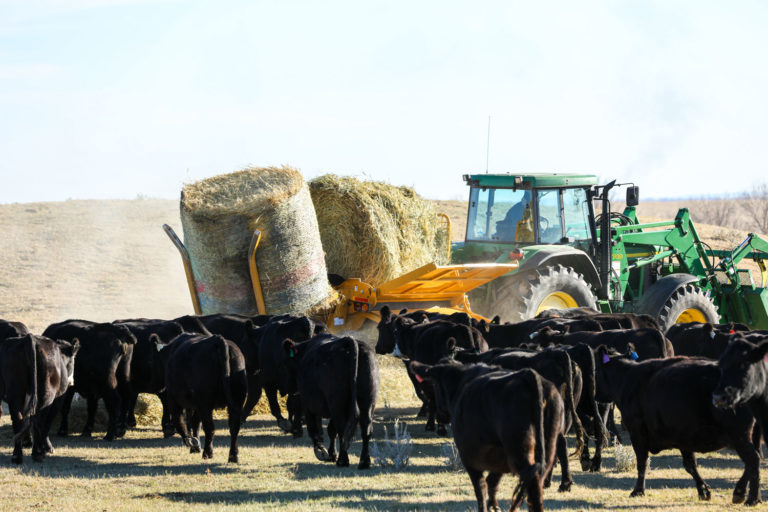
When in drought, trust the bale processor
January 2022
BPX9010 bale processors give Montana ranchers more feed options in drought.
For ranchers, the word “drought” is synonymous with headaches. It can cause grain prices to spike. This forces ranchers to pivot on their approach to feeding cattle, which becomes increasingly challenging when hay is in short supply. Tough decisions must be made, like paying a premium to purchase hay from out of state, leasing additional pasture, sending cattle to feedlots or reducing herd size.
The drought has especially impacted ranchers in Montana, where low rainfall and high temperatures in 2021 took a heavy toll on hay crops and grazing pastures. Some in the Big Sky state have reported hay crops being down as much as 85% this year, and the going rate of hay can hit upwards of $300 per ton.
"Bale processors in general are pretty economical compared to some farm equipment, and they can really help stretch the use of your hay."According to Mark Prewett, a Vermeer territory manager in this region of the country, it’s years like this when ranchers can really take advantage of owning a Vermeer bale processor. Some in the area started feeding as early as August due to the lack of grass.
“For starters, bale processors in general are pretty economical compared to some farm equipment, and they can really help stretch the use of your hay,” said Prewett. “Compared to rolling out hay with a pickup, using a Vermeer BPX9010 bale processor can help you cut back by a third, depending on your hay quality. And if you add a scale kit, you can feed a group of cows and cut back even more — almost half of the hay you were rolling out. And that’s a big savings in a year like this.”
Prewett added that some ranchers don’t know exactly how much hay they are really feeding (or wasting) until they begin using a bale processor with a scale kit.
“Not all bales are the same, especially when you’re buying hay, so it can be eye-opening how much variability there is in bale weights,” Prewett said. “I had one guy who thought he was feeding 1,100 pounds, only to find out it was closer to 700 pounds or 800 pounds. Some of his cows were getting by with less, and others were wasting the difference.”
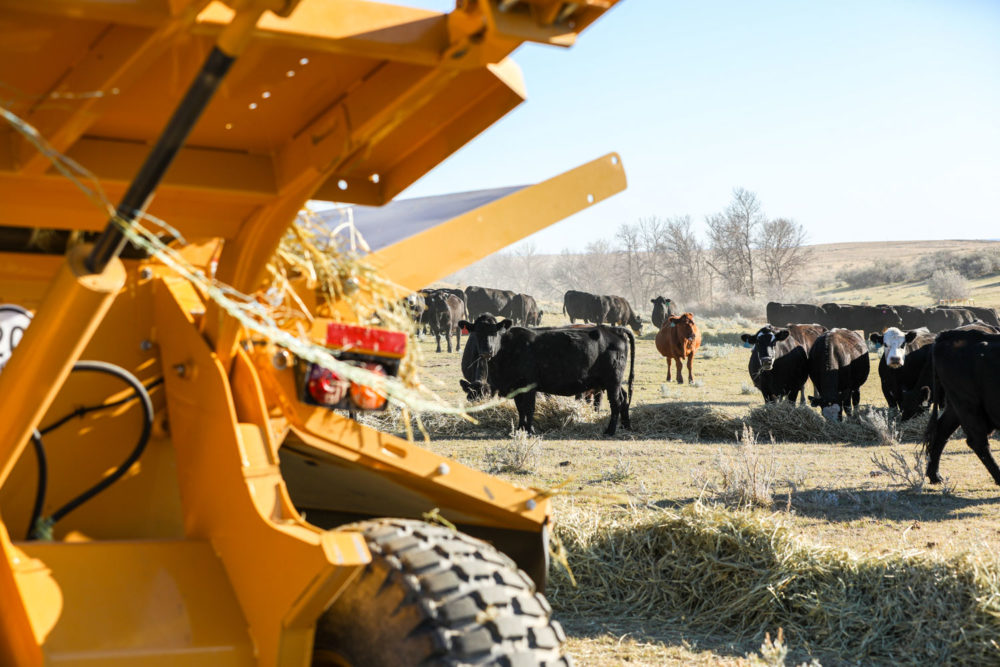
For Andrew Seleg, the key to successfully managing hay when in a drought is minimizing hay waste. For years, the Montana rancher used bale feeders or rolled out bales with a pickup to feed his cattle. Between big, sweeping winds blowing hay around and the cattle stomping on it, Seleg observed a lot of waste taking place. That’s a tough pill to swallow in the best of times, let alone in a drought.
There is no silver bullet in these times, though Seleg has found one solution to help reduce waste and improve feed efficiency: using a bale processor to feed his herd. With the ability to accurately place feed in a bunk or windrow and control material cut length, the Vermeer BPX9010 bale processor gives Seleg more options, control and feed efficiency. As a first-time owner of a bale processor, he said it has made an immediate impact on his ranch.
“With the (BPX9010) bale processor, we eliminated huge amounts of hay waste,” said Seleg. We can finally feed in the bunk, which eliminated a lot of our problems. I know how much I need to feed (the cattle) per day and I can feed that amount without having to worry about whether it’s getting wasted.”
According to Seleg, the ability to control cut length has made his cows less choosy come feeding time. “Now it’s not big, long stems, so I know the cows will eat it. It’s not going to waste and I’m not losing condition on my cows.”
Time for an upgrade
Fellow Montana rancher Jesse Smalis has been sold on the advantages of bale processors for some time now. After five years of running his Vermeer BPX9000 bale processor, Smalis figured it was time for an upgrade. The decision was relatively simple: Get a BPX9010 for the simplicity, durability and versatility he needs for his operation.
"When it’s a drought, like it is in our five-state region, a machine like this is definitely worth the investment."Smalis processes about 3,500 large round bales per year, with a 60-40 split between dry and wet hay. One of the things he likes most about the BPX9010 is its ability to process a variety of materials and moisture contents. Plus, with the drought increasing the need to purchase hay, it’s nice to know he has the option to process round or square bales, as well as older bales that have been sitting around for a few years.
“The ability to adjust the cut on the machine is very important when you’re going from dry to wet hay,” said Smalis. “You can adjust it quickly and get a really nice cut. This really makes a difference when processing older bales. We have run four-year-old bales through it and the cows will eat it.”
Whatever the size, shape or age of bales Smalis has available, he is confident the BPX9010 can handle it and deliver good feed to his cattle. “The (BPX9010) devours hay. It handles it all. Put square bales through it if you need to,” said Smalis.
Add it all up and the BPX9010 bale processor is making a big impact on the Smalis ranch.
“When it’s a drought, like it is in our five-state region, a machine like this is definitely worth the investment,” he said.
Put a bale processor in your 2022 plans
Whether you’re relatively new to bale processors like Andrew Seleg or looking to upgrade to a new model like Jesse Smalis, now is the time to talk to your local Vermeer dealer about the BPX9010 bale processor.
Information noted above was gathered from a third party who was advised his/her experience might be featured in marketing materials. This article contains third-party observations, advice or experiences that do not necessarily reflect the opinions of Vermeer Corporation, its affiliates or its dealers. Individual results may vary based on care and operation of machine and crop and field conditions, which may adversely affect performance.
Vermeer Corporation reserves the right to make changes in engineering, design and specifications; add improvements; or discontinue manufacturing at any time without notice or obligation.
Equipment shown is for illustrative purposes only and may display optional accessories or components specific to their global region.
Please contact your local Vermeer dealer for more information on machine specifications.
Vermeer and the Vermeer logo are trademarks of Vermeer Manufacturing Company in the U.S. and/or other countries.
© 2022 Vermeer Corporation. All Rights Reserved.


